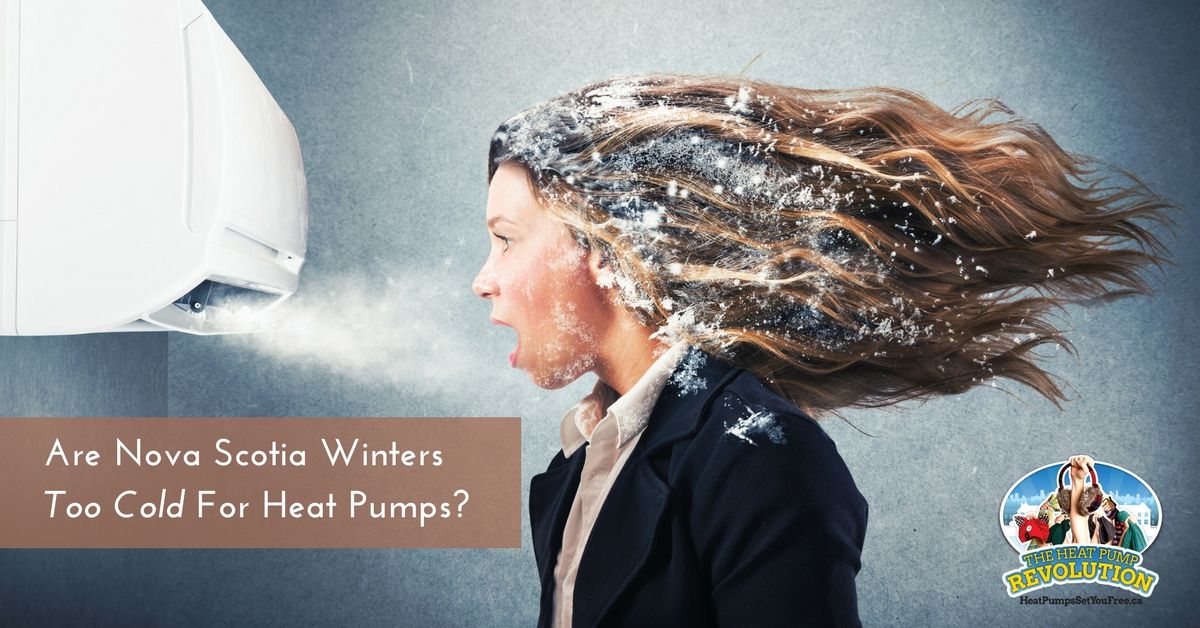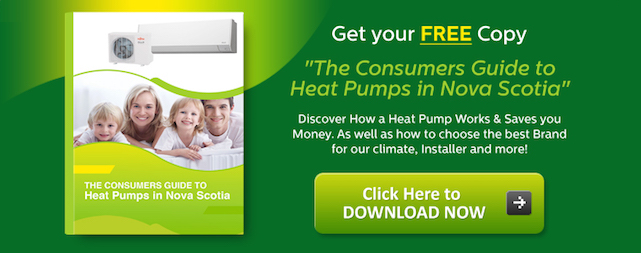How Do Heat Pumps Perform In Nova Scotia’s Cold Weather?

Heat pumps are leading examples of how far engineering technology has advanced to provide energy efficient heating using electricity. Instead of using fuels to create heat, they harvest the existing heat from the outdoor air, concentrate it and bring it inside. Both central heat pumps and ductless mini split systems provide at least three to five times the heat for the same amount of energy as electric resistance heaters do.
Heat Pump Limits
Since heat pumps extract heat from the air, their efficiency depends on outdoor temperatures. Less heat in the air meant that the heat pump has to work harder to collect the available heat.
High-end efficient machines can extract heat down to temperatures as low as -20°C and even lower in some instances.
What is Heat Pump Efficiency?
The heat pump industry applies two efficiency ratings to heat pumps. The first is the HSPF (heating season performance factor) and the second is its COP (coefficient of performance). Of the two, the COP is easiest to understand and apply to this region.
Electric space heaters, furnaces, or baseboard heaters all rely on electric resistance to generate heat. They create one unit of heat for every watt of electricity they use, which gives them a COP of 1. Heat pumps, on the other hand, in optimum conditions create at least three units of heat for every watt they use, giving them a COP of 3 or 300 percent.
The most efficient heat pumps have COP ratings of 5 and more when measured at optimum temperature. As temperatures fall, heat pumps have less heat to work with, and their COP ratings fall. Electric resistance heating systems always have a COP of 1, regardless of outdoor temperatures.
Rated Outdoor Temperatures
Manufacturers specify the rated outdoor temperature of each model of heat pump, including ductless systems. The most efficient heat pumps work effectively in temperatures as low -25 C, which means that the pump will deliver dependable, efficient heat above that threshold. While such a system may deliver heat at 500 percent efficiency when temperatures are in the mid-20s, the efficiency at -25 C may approach 150 to 200 percent efficient.
Another way to look at it is by comparing its output in heat energy, measured by BTUs (British thermal units). Depending on its efficiency, a 12,000 BTU system can deliver 15,000 BTUs when temperatures are in the single digits, but the output may fall to 9,000 BTUs as temperatures dip to the teens below zero.
It will still cost less to use a heat pump for home heating than electric resistance heaters, but the lower the temperature falls, the more electricity a heat pump draws.
NOTE:
It’s important to ask your contractor how much heat a particular system is able to produce at -20°C and below. There’s no rule stopping a lower efficient heat pump unit from posting an operating temperature of -25°C, even though the unit may have a COP of less than 1 at that temperature.
Getting the Most from Heat Pumps
Systems with higher efficiency provide heat at lower temperatures, and although they cost more initially, their lifetime operating costs are lower. Before selecting a ductless mini split heat pump, it’s important to work with an HVAC expert to size it carefully for the home and position it for optimal comfort.
REQUEST A FREE
In-Home Assessment for a Heat Pump System
FREE Assessments take approximately 30 minutes. After your appointment, you will know your best options for cutting heating costs and maintaining comfort in your home.
You can also book free in-home assessments online here: BOOK AN ASSESSMENT
If you require service and repair please fill out the request form below. We will contact you to book an appointment.
© 2024 - Sunshine Renewable energy · All Rights Reserved · All Logos & Trademark Belongs To Their Respective Owners
Web Design by immediac

